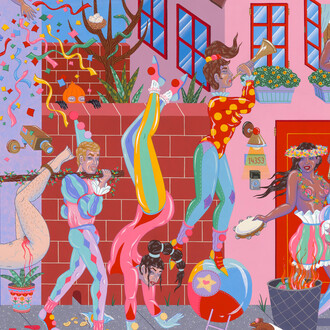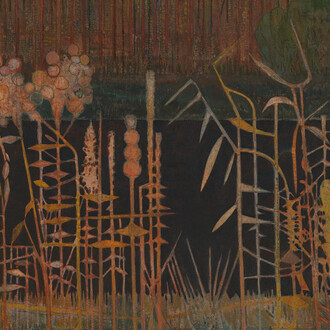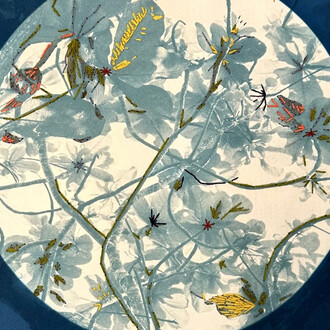Anat Ebgi is delighted to announce Love in a mist, an exhibition by Los Angeles artist Samantha Thomas. This is Thomas’s first solo presentation in New York in over a decade and features new abstract paintings. On view at 372 Broadway in Tribeca from April 18 through June 14. An opening reception will take place on Friday, April 18 from 6-8 pm.
Samantha Thomas begins with the primary building blocks of painting: color, shape, texture, line, space, and light. Love in a Mist explores the potential of abstraction to uncover meaning and emotion suspended in color and form—be it joy, sadness, love, affection, excitement, surprise, boredom, shock, confusion, or the hidden layers of one’s own history.
Using common studio materials Thomas is ever-exploratory in her applications. She weaves, unravels, coats, folds, stretches her materials to their limits. For the woven works Thomas combines techniques of destruction and repair. Cutting away portions of stretched canvas and reweaving new threads back through; the result is sensuous and textured fiber-abstractions. For Index of reflection, the largest painting in the exhibition, Thomas has tilted the pictorial square on its point, forming a diamond, extending the horizontal direction and potential of her threads. The work nods to modernism of Mondrian, while developing a language of color, movement, and emotional expression entirely her own.
Thomas’s prismatic woven works find their form line by line; vibrant bands of color draw the eye across the canvases, building up accretions like geological sediments suggestive of time’s passage. Primarily eschewing blacks and whites in favor of pure color Thomas makes dynamic shifts—both harmonious and unexpected. This part of the process is improvisational, guided by her sensitivity to the relationship between neighboring colors.
Accenting the exhibition are Thomas’s monochromatic tondos from her ironically named ‘fleurs’ series. These pieces are formed by gathering the canvas into a circle of undulating folds. They appear supple, delicate, and blossom-like, yet the curving forms are solid and imposing. Ultimately minimal and precise, these are experiments in the potential of color; ruched reflections on the subtleties of shifting light and shadow; and defiantly contest the inherent flatness and regularity of canvas from which they are constructed. Spinning like celestial bodies in orbit, they allude to light sources cascading luminescence on the woven sedimentary topographies in the exhibition
















